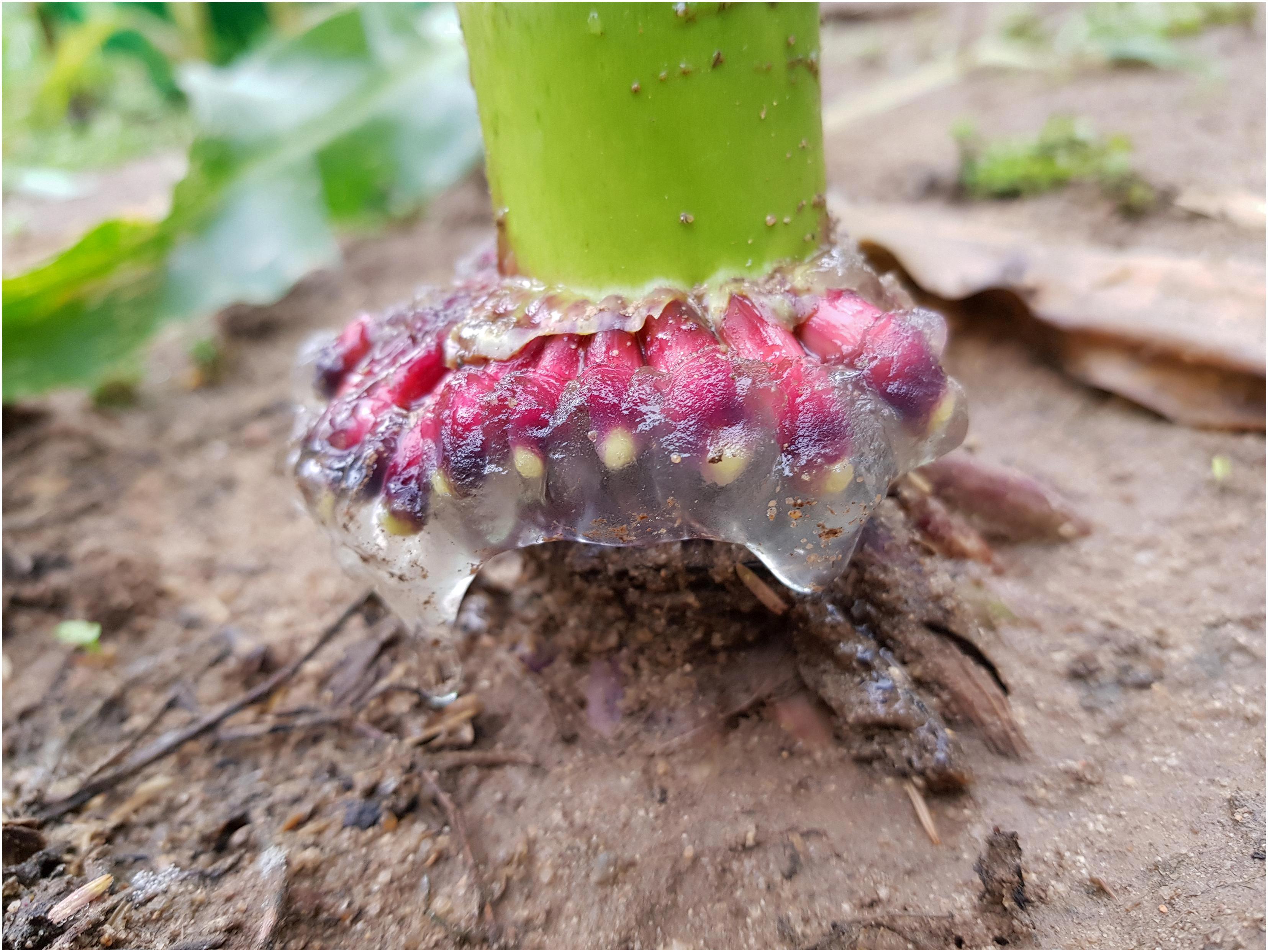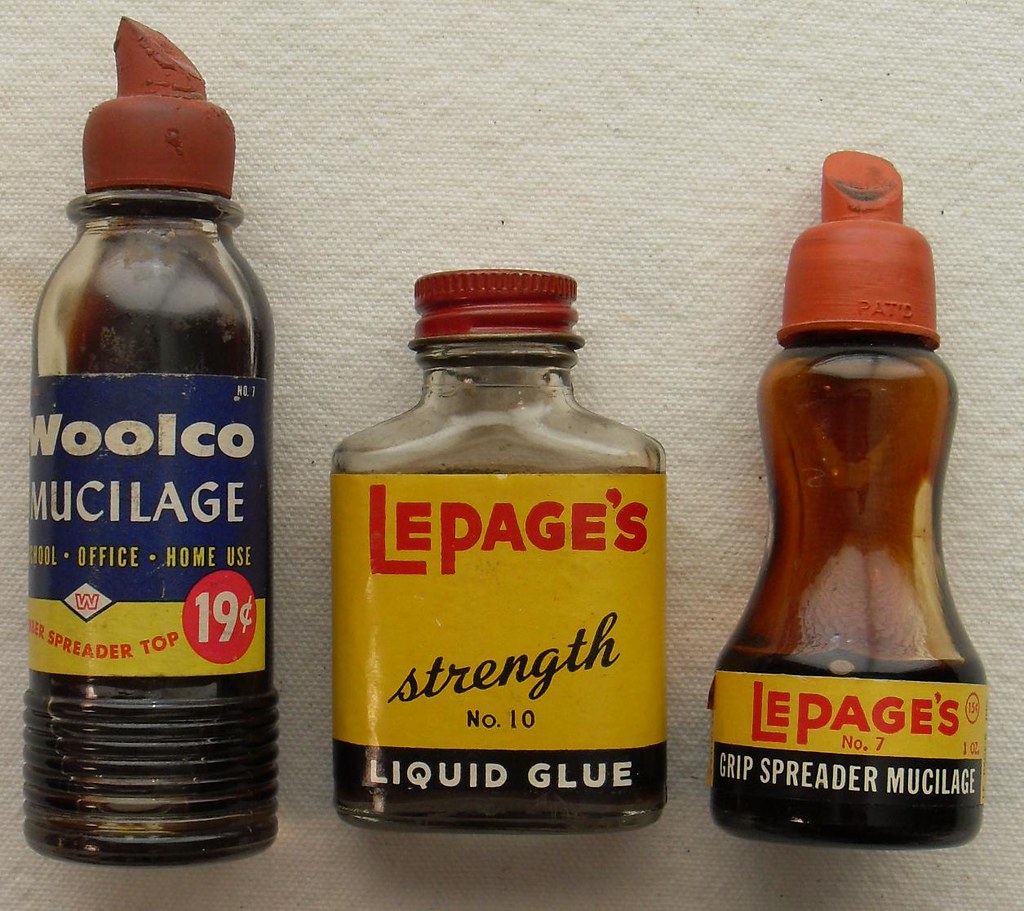Mucilage glue has a long history of being a reliable and non-toxic adhesive that has been used in classrooms and homes for over a century. This plant-derived adhesive was developed and marketed by the LePage Company in the 19th century, and it quickly became a staple for bonding paper items.
One of the main advantages of mucilage glue is its non-toxic nature. This made it ideal for use in school settings where children may accidentally ingest the adhesive. Mucilage contains natural sugars such as Arabinose, Glucose, and Galactose, which are derived from plant seeds such as guar bean, Fleaseed, locust bean, tamarind seed, and seaweed such as agar agar and Carrageenan. It can also be obtained as a byproduct of paper making.
The adhesive strength of mucilage glue is impressive, with dried-out P. ovata husk mucilage havig an adhesion strength ranging between 0.04 and 0.31 N/mm2. UHU glue control samples, which are a common type of glue used in schools, had adhesion strengths that varied from 0.14 to 0.19 N/mm2. This shows that mucilage glue is a reliable adhesive that can be used for a variety of paper-based projects.
Despite its many benefits, LePage has recently decided to discontinue the production of mucilage glue. This decision has been met with disappointment from many educators and parents who have relied on this non-toxic adhesive for years.
Mucilage glue is a reliable, non-toxic adhesive that has been used in classrooms and homes for over a century. Its adhesive strength is impressive, and it is derived from natural plant sources. While it may no longer be readily available, its legacy as a safe and effective adhesive will continue to live on.
What Is Mucilage Glue?
Mucilage glue is an adhesive that is made from plant-derived sources. It is an amber-colored, transparent adhesive that has been used for centuries. Mucilage glue is commonly used for bonding paper items, and it was originally used for lickable postage stamps and envelope flaps due to its non-toxic nature. The LePage Company developed and marketed mucilage in the 19th century, and it quickly became popular among schoolchildren for use in arts and crafts projects. Mucilage glue is easy to apply and dries clear, making it an ideal adhesive for a variety of paper-based applications.

What Is Mucilage Glue Made From?
Mucilage glue, also known as vegetable glue, is composed of a mixture of three sugars: arabinose, glucose, and galactose. This type of glue is typically obtained commercially from a variety of plant seeds such as guar bean, fleaseed, locust bean, and tamarind seed. Additionally, it can be extracted from seaweed species such as agar agar and carrageenan. Another source of mucilage is as a byproduct of the paper-making process. mucilage glue is a natural adhesive that is widely used in various industries due to its unique chemical composition and adhesive properties.
Is Mucilage Glue Still Made?
Mucilage glue, also known as gum arabic glue, is a type of adhesive that has been used for over a century due to its natural sticking power and non-toxicity. Although it was once a staple in classrooms and households, it has become increasingly difficult to find in recent years.
While some companies still produce mucilage glue, it is not as widely available as it once was. LePage, a popular brand of mucilage glue, has unfortunately decided to discontinue its production. However, thre are still alternative options available on the market, such as Elmer’s School Glue.
It is worth noting that while mucilage glue may not be as easily accessible as it once was, it is still a viable option for those who prefer natural and non-toxic adhesives. Additionally, there are many DIY recipes available online for making mucilage glue at home using gum arabic powder and water.
While mucilage glue may not be as widely produced and available as it once was, there are still options for those who seek out this natural and non-toxic adhesive.
How Strong Is Mucilage Glue?
Mucilage glue is a type of adhesive that is derived from plant sources. Specifically, the mucilage of the P. ovata husk has been studied for its adhesive properties. The adhesion strength of dried-out P. ovata husk mucilage has been found to range between 0.04 and 0.31 N/mm2. This suggests that mucilage glue can provide a moderate to strong bond, depending on the specific application.
It is worth noting that the adhesion strength of mucilage glue is comparable to that of UHU glue, which is a common commercial adhesive. In fact, the UHU glue control samples had adhesion strengths that varied from 0.14 to 0.19 N/mm2, which is within the range of the mucilage glue.
Mucilage glue can be a viable option for bonding materials in various applications. However, as with any adhesive, it is important to conider the specific requirements of the project and select an appropriate adhesive accordingly.

Conclusion
Mucilage glue has been a staple adhesive for over a century due to its non-toxic and plant-derived nature. It has been widely used by schoolchildren and in postage stamps and envelope flaps. Mucilage is commercially obtained from various plant seeds and seaweed, making it an eco-friendly option. The adhesion strength of mucilage varies depending on the source, but it has been shown to be comparable to oher commercial glues. It is unfortunate that LePage has decided to discontinue this natural and reliable adhesive. In a world where environmental concerns are increasingly important, mucilage glue stands out as a sustainable and safe option for various applications.
